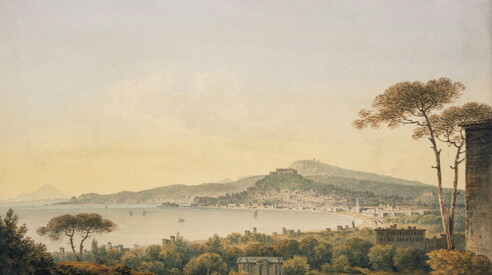The dimension that fashion needs today is travel


Photo by Birmingham Museums Trust on Unsplash
Front row
Anyone who buys ready-made clothing has the right to know where, how, and by whom the item they're buying was made. "I learned everything traveling with my uncle between Naples and Brora," says the CEO of the Kiton Group, president of Pitti Immagine.
On the same topic:
Do you know where Brora is? Almost at the easternmost tip of Scotland, in the Highlands. For centuries, it has produced a whisky for connoisseurs, as well as quality wool. It's a three-day drive from Naples . But my uncle, Ciro Paone, the founder of our group, wasn't a fan of plane travel, or even train travel; so, at least a couple of times a year, we'd hop in the car and set off on that long journey to the border of the United Kingdom, to select the tweeds and Shetlands from Hunters, founded in 1901, a marvel. Everything I know about trade, but also about travel as a moment of learning, cultural enrichment, and exchange, I know thanks to those days spent behind the wheel, stopping at the trattoria we trusted and the hotel we found welcoming, each time discovering new countries, new panoramas, forging connections that, sometimes, would turn into job opportunities. One of the companies in our supply chain, in Fidenza, became a Kiton company thanks to one of these trips: traveling up the peninsula, we were told that exceptional knitwear was produced there. We asked to visit it; now the Somma family's facilities and expertise are an integral, fundamental part of the Kiton group; the founder's children remain 40% shareholders. If instead of taking the car, we'd have hopped on a plane, we could have reached Edinburgh in less than three hours, and from there to Brora with a driver in another two, tops. But we wouldn't have strengthened our supply chain and we'd also have missed out on the beauty of the adventure.
I believe my idea of a business trip closely resembles that of Marco Polo, the "million," as that family of merchants and explorers was known in Venice. I never thought of his long journey as making trade agreements or establishing diplomatic relations as the sole purpose. Moreover, the long descriptions of the landscapes and the nights spent in a caravan in central Asia en route to the kingdom of Kublai Khan, which Marco gave to the transcriber of his memoirs, Rustichello da Pisa, tell us that for him, travel was at least as important, if not more so, than his sojourns. Many years ago, the literary critic Luigi Foscolo Benedetto wrote that "Marco Polo addresses himself to all those who want to know: to know what lies beyond the frontiers of old Europe. He does not present his book under the banner of utility, but under the banner of knowledge." I believe this is an interesting point of reflection for today's fashion industry, which is faced with a growing disaffection due to many factors, among which the lack of connection between producers and buyers—that is, between the person who made the garment and the person who wears it—is certainly the most significant.
Throughout history and up until the advent of ready-to-wear, as well as a certain standardized luxury, the relationship between those who purchased clothing or fashion and those who produced it was direct, one-to-one as we would say today. In some cases, and ours is one of them, this is still the case; moreover, many signs indicate that an increasingly large audience is moving, or rather returning, in this direction, that is, that they are once again seeking to rely on a tailor, perhaps a young one, and therefore rich in ideas and a desire to do and experiment rather than in certainties: in our academy, we train around twenty of these young talents every year, and we are extremely proud of the path they embark on, with us or elsewhere. The tailor is a partner, a confidant, and in some ways a confessor: how many projects have been born from the special, unique relationship established between a couturier or designer and their client? Just think of Charles Frederick Worth with Elisabeth de Caraman Chimay, the Countess Greffulhe who inspired Marcel Proust, or Jean Louis Dumas and Jane Birkin . But I believe that those who buy fashion or ready-made clothing also have the right to know where, how, and by whom the garment they buy was made: this is what blockchain is for, of course, although I am convinced that even such an important tool is not sufficient to meet the demands of those who now buy fashion to know, to understand, to make the garment they wear a part of themselves. This is the dimension that fashion needs today: the dimension of travel .
*CEO of the Kiton group, president of Pitti Immagine
More on these topics:
ilmanifesto





